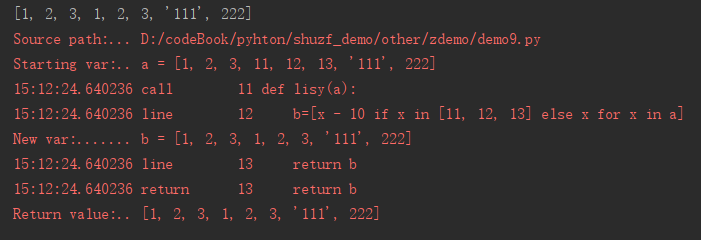__new__函数
在实例化开始之后,在调用 __init__() 方法之前,Python 首先调用 __new__() 方法
#单例1 class Singleton1(object): def __new__(cls,*args, **kwargs): if not hasattr(cls,'_inst'): cls._inst = super(Singleton1, cls).__new__(cls) #相当于object.__new__(cls) return cls._inst #单例2 class Singleton2(object): def __new__(cls,*args, **kwargs): if not hasattr(cls,'_inst'): cls._inst = object.__new__(cls) return cls._inst if __name__ == '__main__': print(Singleton1()) print(Singleton1()) print(Singleton2()) print(Singleton2())
class Person(object): #自定义单列 def __new__(cls, name, age): if 0 < age < 150: return super(Person, cls).__new__(cls) # return object.__new__(cls) else: return None def __init__(self, name, age): self.name = name self.age = age def __str__(self): return f'{self.__class__.__name__}{self.__dict__}' print(Person('Tom', 10)) import time time.sleep(5) print(Person('Mike', 200))
@staticmethod、@classmethod修饰符
我们知道对于一个普通的类,我们要使用其中的函数的话,需要对类进行实例化,而一个类中,某个函数前面加上了staticmethod或者classmethod的话,那么这个函数就可以不通过实例化直接调用
@staticmethod不需要表示自身对象的self和自身类的cls参数,就跟使用函数一样。
如果在@staticmethod中要调用到这个类的一些属性方法,只能直接类名.属性名或类名.方法名。
@classmethod也不需要self参数,但第一个参数需要是表示自身类的cls参数。
而@classmethod因为持有cls参数,可以来调用类的属性,类的方法,实例化对象等,避免硬编码。

class Animal(object): name = 'dog' def __init__(self,name): self.name = name def intro1(self): print('there is a %s'%(self.name)) @staticmethod def intro2(): print('there is a %s') @classmethod def intro3(cls): print('there is a %s'%(cls.name)) Animal('cat').intro1() Animal.intro2() Animal.intro3()
@property修饰符
property使方法像属性一样调用,就像是一种特殊的属性
有参函数时,@name.setter

class Animal(object): def __init__(self,name): self.name = name @property def intro(self): print('there is a %s eating'%(self.name)) @intro.setter def intro(self,value): print('there is %d %s eating'%(value,self.name)) a = Animal('cat') a.intro a.intro=2
@修饰符
从第一个函数修饰符开始,自下而上做参数传递

#修饰无参函数 def log1(func): func() @log1 def test(): print('test:') #修饰有参函数 def log2(func): def inner(*args, **kwargs): func(*args, **kwargs) return inner @log2 def test(num): print('testlog2:',num,test.__name__) test(20) #相当于log(test(20)) from functools import wraps #@wraps不改变使用装饰器原有函数的结构(如name, doc) #修饰有参函数 def log3(func): @wraps(func) def inner(*args, **kwargs,): func(*args, **kwargs) return inner @log3 def test(num): print('testlog3:',num,test.__name__) test(30) #相当于log(test(30))
@pysnooper修饰符
日志打印工具,用显示函数间的入参和返回值的变化

import pysnooper @pysnooper.snoop() #@pysnooper.snoop('log.log') def lisy(a): b=[x - 10 if x in [11, 12, 13] else x for x in a] return b print(lisy([1,2,3,11,12,13,'111',222]))

